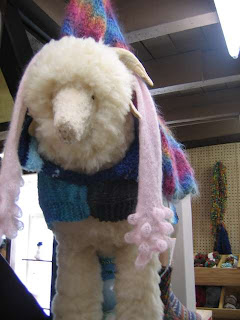What Would You Do in this Situation?
I need an opinion here. What do you do if you have a marker sitting between two stitches you need to knit together?
For illustration purposes, let's say I have 10 stitches on my needle and I have placed a marker between stitches 5 and 6 (making 5 stitches on either side of the marker). The row to be knitted looks like this:
Row 1: K4, k2tog, k4
What would you do?
For illustration purposes, let's say I have 10 stitches on my needle and I have placed a marker between stitches 5 and 6 (making 5 stitches on either side of the marker). The row to be knitted looks like this:
Row 1: K4, k2tog, k4
What would you do?
- Slip stitch 5 to the right needle, remove the marker, slip the stitch back to the left needle, then knit two together.
- Do #1, then place marker on the right needle.
- Do #1, then slip the stitch just worked back onto the left needle, place marker, slip.
- You can't k2tog while there's a marker between the stitches! There is a problem with the pattern.

Comments
if I wrote the pattern , I want the marker before that st, whatever happens to it, so I'd slip, remove, slip back, pm on right needle, k2tog.
(note, were it ssk, I'd put the marker AFTER the decreased pair.
If I were to try to apply an algorithm to this problem, I could solve it by placing a marker that would behave as the pattern author intended (which could be any one of the four scenarios, in fact.) When I go to decrease across a marker, the type of marker would dictate the end result.
But you know, it never hurts to check the errata, even if you don't think there's a problem.
I have wondered this one before. I believe it was when I was doing the saddle shoulders portion for a seamless hyrbrid.
I would slip, remove marker, slip back, k2tog, then put marker on right needle.
But I agree it depends on what the items needs to do. I knew I needed the one part to stay the same size while the other was decreasing. Then I would count, count, and recount for a couple rows to make sure it was right, haha!